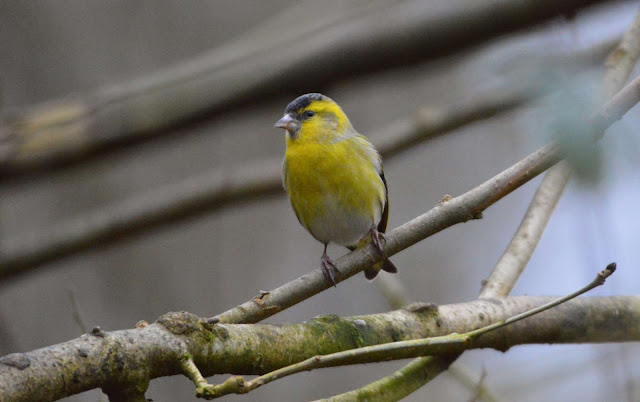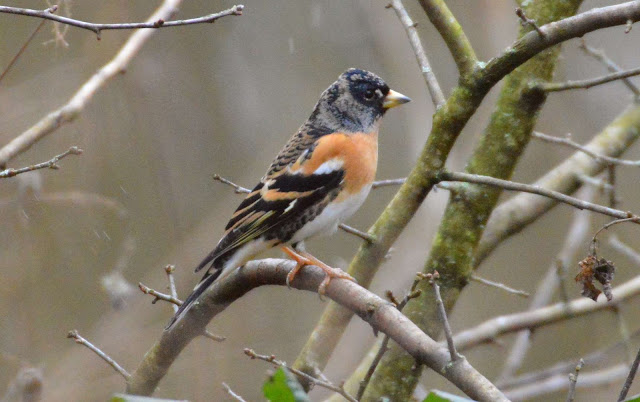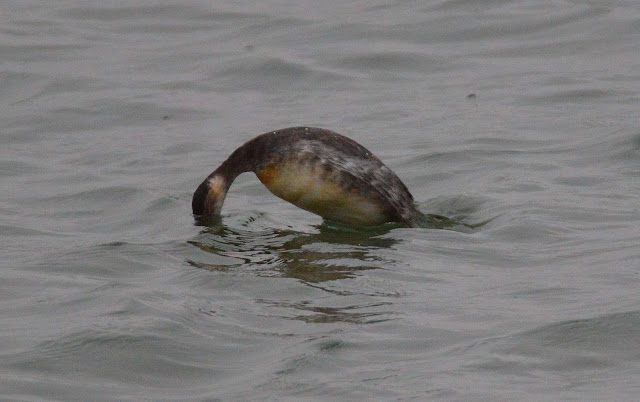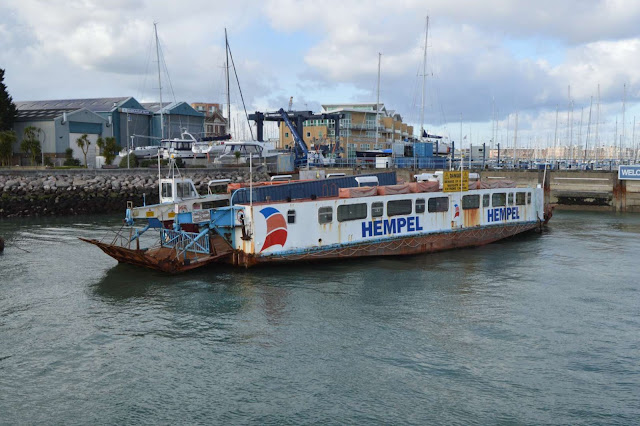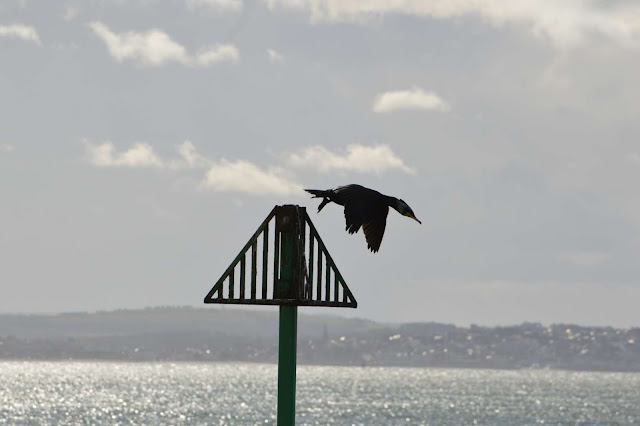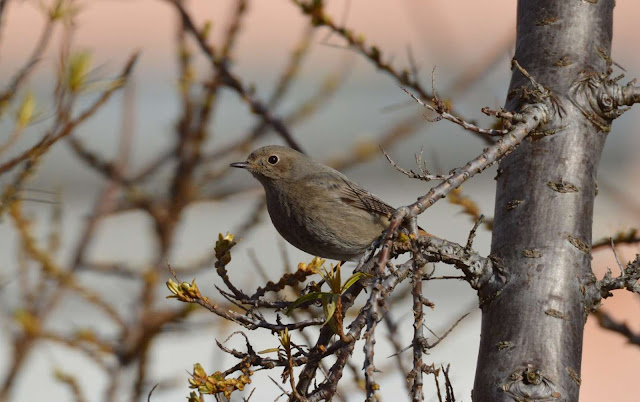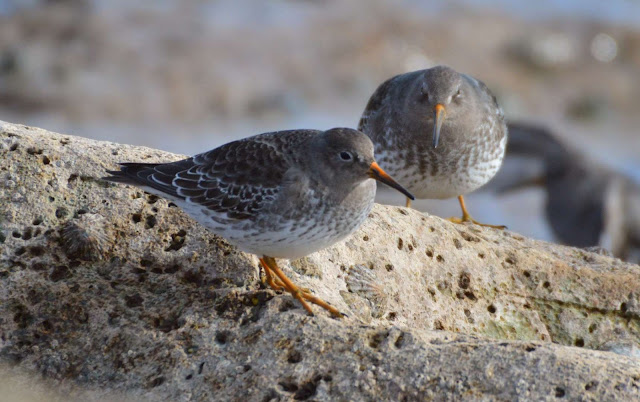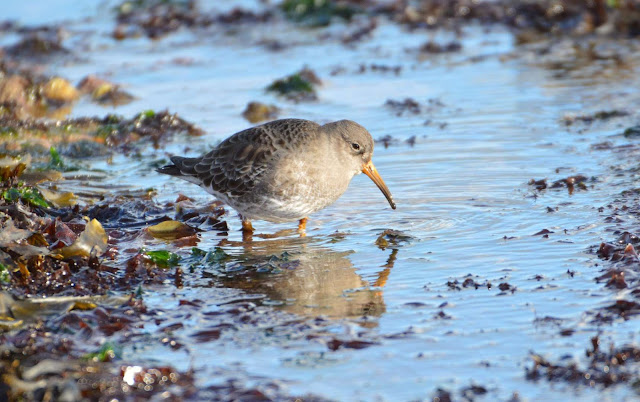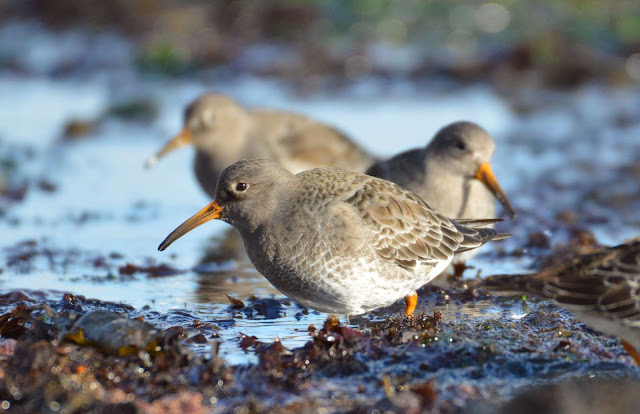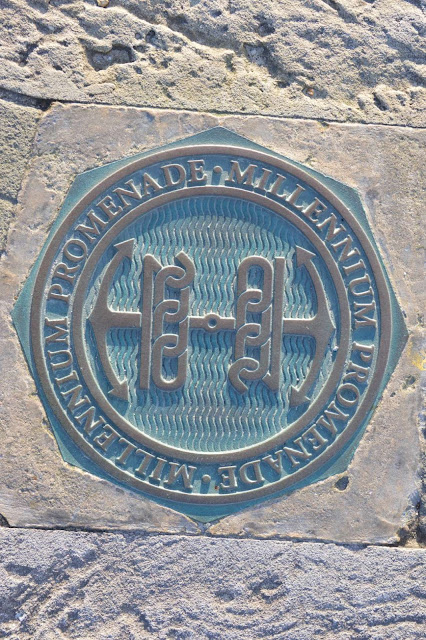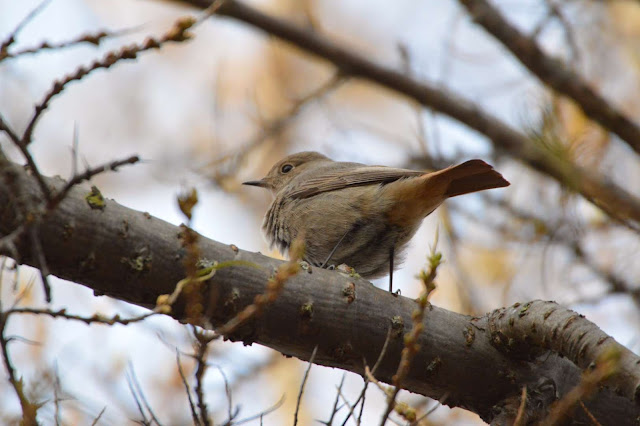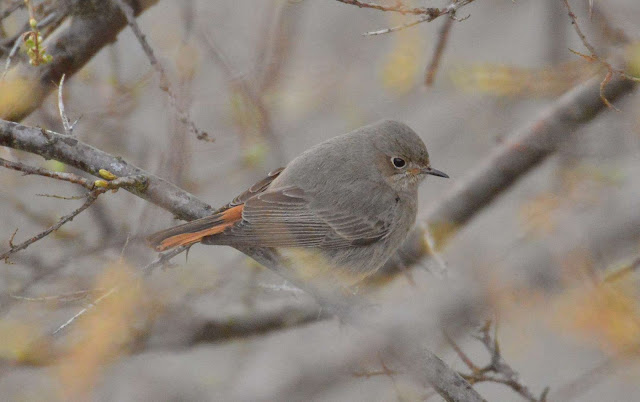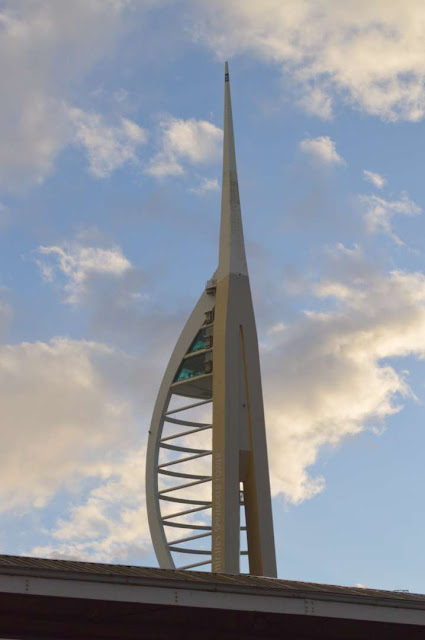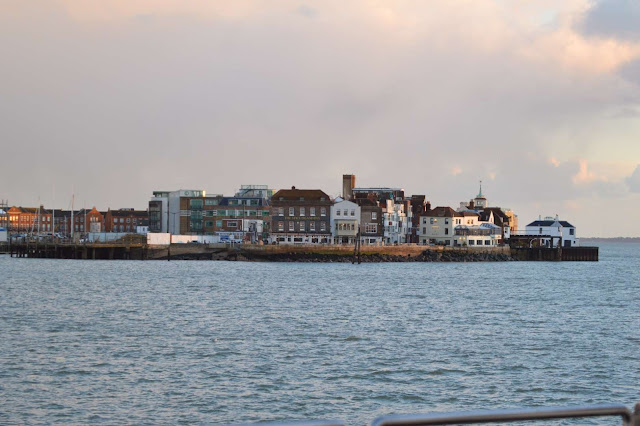I had arrived half an hour before sunrise at 6.45am. The night darkness had already begun to give way to dawn light as the Earth gradually rotated.
There was little wind, so the soft early subdawn chorus of birds travelled far in the crisp stillness as I turned off the engine and stepped into the sharp cold calm. I could hear Blackbirds, Song Thrush, Robin, Geese, Swans and the odd vehicle on the main road in the distance.
The silhouetted winter trees filtered the growing light as the colour of the day bled through them. Every second that passed added more technicolour to the canvas.
My good friend Chris had arrived 15 minutes later, most unusual. His expression highlighted that fact as we met. I assured him I hadn't wet the bed !
I do love being awake and in the outside world well before sunrise, it's just my love of my bed and my reluctance to extract myself from it that hinders me.
Kitted up, multi layered, we headed along the track bordered by fields and headed to the church and farm.
There was a slight frost which was enhanced by the glow of the sunrise.
Blashford Lakes sits almost opposite the main road. Once gravel pits, now flourishing in the realm of nature, nurtured by the hand of the Wildlife Trusts. The myriad of gulls that roost there began leaving in considerable numbers. There are rare gulls to be seen amongst these but we just marvelled at the sight before us as they headed north to their feeding grounds. That was sufficient for us. They will return by late afternoon as they will do every Winter day, until they disperse to their breeding grounds in early Spring.
As we neared the farm down the single track past the small bridge and church, the farm fields opened up before us.
They are perfect grazing grounds for Geese and Swans.
The Geese consisted of three species. Canada, Greylag and Egyptian. There were considerable numbers of all three. Egyptian the least, but being so rare, the 30 odd individuals seemed twice that amount. The do have a penchant for squabbling however.
There were large numbers of Mute Swan grazing too. We were hoping to see the single Bewick Swan that had been seen recently.
The light through the hedges gave some abstract shapes along the lane.
The Egyptian Geese were now going at it hammer and tongs, drawing a crowd seemingly egging them on.
More Egyptians flew in to observe the spectacle..
The air was filled with muffled calls of wildfowl.
In amongst the geese there were large numbers of Fieldfare and a few Redwing feeding on the soft earth for invertebrates. These Thrushes visit our island every autumn and winter from northern Europe along with Song Thrush too. Once a common garden bird, the Song Thrush is a real rarity these days. More common in the countryside, I'm lucky to find these in my garden now. If I do then it is in Winter only.
The Fieldfare and Redwing are regularly seen feeding together in large numbers whereas the Song Thrush will rarely be seen associating themselves with them.
Along the hedge lined track there was a Song Thrush doing what it name suggests. They do seem to spend a vast amount of time singing rather than feeding.
Chris and I had finally reached back to our vehicles. The Bewick's Swan that had been seen around wasn't on our radar that morning.
This Swan species is most related to spending the winter in more northern English climes. Although a few decades ago a couple of hundred could be seen here. When I first moved to this area of Hampshire there were no more than a dozen frequenting the valley. Now, there is only one. Perhaps it's mates have been seduced to other more enticing feeding grounds. Maybe they have died. Climate change may also have had a factor in pushing the birds further north?
Although a no-show from the Bewick, the sights, sounds and smells from our truncated walk were enough to placate our thirst for a rare bird and we set off for Blashford Lakes nature reserve.
The reserve was still closed but it's still possible to walk around it until the hides are opened at 9am.
The northern part of the reserve is mainly woodland with lakes surrounding. The visitor centre sits in the middle of this.
The woodland hide nestles in a hollow and is great for close observation of the majority of woodland birds. Also bank vole, rabbit and deer.
As we stood waiting for the hide to open, we could observe matters from the bank at one side.
At this time of year the birds are flocking in numbers. The Robin you may see in your garden may well be from the continent and the competition for for food and territory is fierce.
There were a number of them here. They posture towards their foe with a strange slow animated arrogance. Swaying to and fro pushing their breast forwards.
There are a real mixture of species. Long Tailed Tits
Siskins
and Bramblings. These are autumn and winter visitors only. Superficially similar to the Chaffinch but in much smaller numbers. This is a male.
The Nuthatch is always a welcome sight too..
We exited the hide. Snowdrops.. the harbinger of spring had begun to flower. Daffodils would be next up. Their leaves had already begun to push through the earth.
With the weather forecast due to be pretty wet from lunchtime onwards, our sensible plan was to hole up in the three hides surrounding the massive lake that is Ibsley Water to the north of the reserve. It's always good idea to bring a telescope here. The lake must be half a mile long and half as wide at least. So, naturally, photography is distant at times. Plus the birds seem to give the hides a wide berth as though they know exactly what resides within.
The Tern Hide is the first up giving views right down the lake.
Goldeneye duck were performing their courting dance. The 3 males jostled for superiority, head flicking and pointing in visual staccato motions vying for the attention of the females. And it was still only February.
As we moved between the showers to the Goosander and subsequently the Lapwing hides which both look across the water, the visibility rapidly shortened.
Having reached the Lapwing and last hide we dried off as we looked gloomily through the open windows. The rain came in waves diagonally across the hide and made scanning the water a one sided affair. After a few minutes we were graced with the presence of a Black Necked Grebe. Clearly in winter plumage. This was like a shaft of light when all around was grey. There are 5 main Grebes that can be seen in this country and we had seen them all. Great Crested, Little, Slavonian, Red Necked and finally Black Necked. Of the latter 3 I would one day love to see them in their summer plumage. They are a sight to behold but unfortunately do not breed this far south.
It would constantly dive for food. It's diet is very much of catholic taste. Fish, crustaceans, molluscs, insects, amphibians and vegetation.
The weather had closed in further. It was mid afternoon so we cut our losses and squelched back to our vehicles. Even distant roosting rare gulls couldn't deter us from the sanctuary of a dry warm place to reside.
What a difference a day makes. That was Saturday. Here I was on a late Sunday morning boarding the Gosport ferry in bright winter sunshine to Portsmouth on the opposite bank.
The Spinnaker Tower stands guard at the port entrance as the ferry arrived to escort me to Pompey.
On the Gosport side sits the old chainlink ferry that used to ply it's trade in Cowes on the Isle of Wight until it's replacement last year. After all the problems with the new one, I reckon the locals there would have preferred it to stay.
The Wightlink ferry was leaving for Fishbourne on the Island as my ferry made it's way across the harbour.
Ever since I was a kid, if we travelled on the Gosport ferry, it had to be on the top deck, no matter what the weather! Today was kind, if not a little breezy with the stiff easterly providing a windchill factor a few degrees lower than the ambient one. I was well wrapped up to combat this however.
Looking North from the ferry, the naval base had HMS Dauntless, a Type 45 Destroyer alongside.
The rather older ship HMS Warrior, built in 1860, the first iron clad warship built in response to the French naval fleet. Within 10 years it was obsolete. Superseded by better ships. Restored in 1980's, it now stands as a museum piece, used for weddings, festivals and corporate affairs.
Having disembarked, I negotiated the sensory overload that is the shopping centre of Gunwharf Quays, as alien a place to me as the surface of the Moon and I survived out to the other side.
The Millennium Promenade leads from the Quays and hugs the shore towards Southsea.
The Southsea to Ryde hovercraft was arriving as I climbed the ramparts of Old Portsmouth, the cold Easterly hit me, drawing my breath.
A Cormorant used the metal marker of the groin to dry it's wings in the breeze.
The ramparts provide the perfect promontory to gaze upon the Sea Buckthorn trees that line the street. The berries of the trees had been giving sustenance to 3 Black Redstarts that had been around all week. These are rare members of the Flycatcher family, certainly in the UK. On the continent they are common.
I hung around for 20 minutes without a sight. I thought it may be too windy for them. I wandered down the steps to look from below which is where I found the first one.
There had been reports of 2 female and a male. The first up was a female, a juvenile by the looks of it..They have a great habit of flickering their tail like flapping a ruler on the edge of a desk.

I clambered up the stone steps to the ramparts once more giving closer, more personal views of the bird.
Another appeared, the adult female this time. There was no sign of the male which was a shame, they are the most striking.
The ramparts give home to many Feral Pigeon, always so photogenic in the light with their iridescent plumage.
I left the Redstarts and headed towards Southsea funfair along the promenade.
Southsea common is home the the Victorious Festival every summer. A vast expanse of green bordering the Solent. It is a great place of human recreation and an avian food source.
Gulls, Starlings and Brent Geese use it regularly, happily coexisting.
My destination was Southsea Castle. Every Autumn and Winter Purple Sandpiper use the concrete seawall to feed. Only a small area but they seem to find it an important place to see out the season.
Brent Geese constantly flew along the shore heading for the common to graze.
I found the sandpiper easily. There were a couple of photographers giving the game away.
The tide was quite low so the shallow bank and concrete border was exposed, giving the Sandpipers easy access to food.
It gives a better opportunity to get down and closer to take some intimate shots. They are very accommodating creatures. If you keep relatively still, they will come quite close while they feed in amongst the seaweed.
Exposed crustaceans such as this Limpet, waited for the tide to rise again.
Carrion Crows always take the opportunity to nab a meal on the exposed concrete.
The height of the tide is made obvious by the colours along the seawall looking towards the renovated Southsea Pier.
There were around 13 individuals here. All quite happy as I sat snapping away.
Having felt privileged to be in their close company for so long, I decided it was time to head back home. Gosport beckoned me in the distance.
In between the parked cars along the promenade I could hear chattering Starlings yet as I looked up I couldn't locate them. They were finding shelter in between the cars on the tarmac. The reflection of the metal lit them up and accentuated their wonderful colours.
The Brent geese were still happy grazing on the common.
As I passed the war memorial I decided on some light refreshment nearby.
The Hole in the Wall is the regular award winning real ale pub here. A must for any real ale aficionado or just a place to visit to witness what a proper pub is all about. A social mecca plus they do simple food. Sausage and Mash, Meat puddings, Curry and Chilli nights with good vegan options, plus top quality real ale from across the country.
Not 100 yards along the same road is another must. It does exactly what it says on the facade. Fab record shop selling amazing pies. No trip to Southsea is complete without visiting these two establishments.
There are many other great shops and restaurants all over Southsea but my time this day was drawing to a close so I headed back to the common to pick up the promenade once more.
Rock pipits flitted occasionally along the old ramparts as I neared Old Portsmouth once more.
The forts in the Solent have been slowly redeveloped over the last few years, providing accommodation and venues for parties , weddings and conferences. I'd love to visit one day.
Upon reaching the Buckthorn trees again, the Redstarts were still to be seen. The male however was not.
The shops and cafes below have given this area a rejuvenated feel but the shoppers for the most part walked by oblivious to their rarified company.
A large grey bank of cloud loomed before me. It didn't look like rain but it didn't bode well so I hot footed it back to the ferry past what is left of the fishing industry here.
I know snow clouds when I see them but what floated from the sky was a mixture of sleet, hail and snow. Similar to polystyrene beads that can be found in bean bags.They were soft but being like a small blizzard I had to cover up my camera and binoculars.
I was back at the bus station by the harbour.
I climbed aboad the Gosport ferry just as the sun was setting.
The view back across to Spice Island and Old Portsmouth from where I had seen the Redstart looked similar to what it must have been some 200 years ago.
Gosport on the other hand is much younger looking, bar Trinity Church on the skyline.
A thoroughly enjoyable wander through some of the heritage this area has to offer throwing up some wonderful natural sights in between. Not a bad sunny Sunday afternoon stroll. It made up for the rather damp gloomy Saturday.
The title of this post is a lyric taken from the song 'What a difference a day makes' by Dinah Washington






















